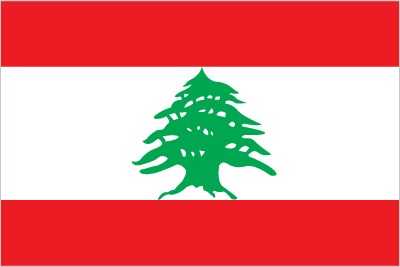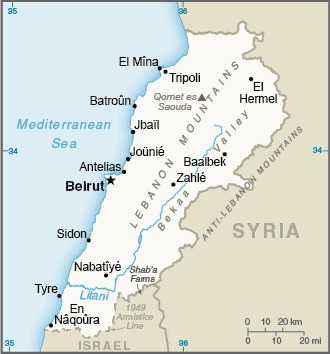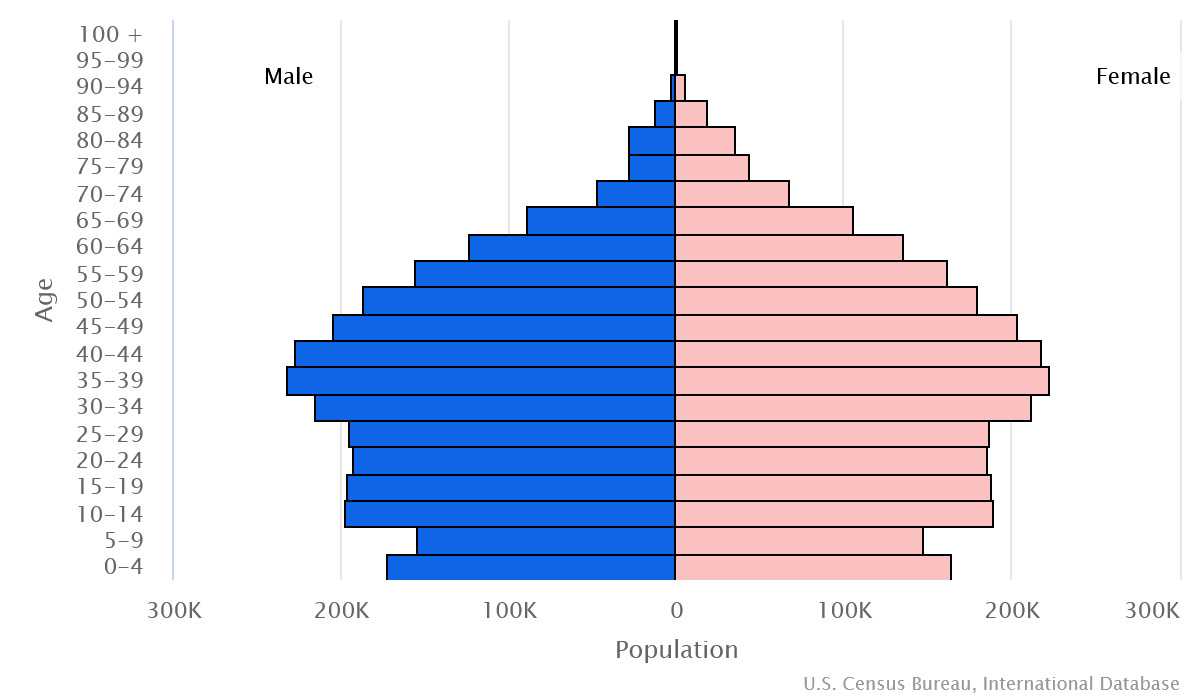Introduction
Background
Following World War I, France acquired a mandate over the northern portion of the former Ottoman Empire province of Syria. From it the French demarcated the region of Lebanon in 1920 and granted this area independence in 1943. Lebanon's borders with Syria and Israel remain unresolved.
Geography
Area
total: 10,400 sq km
land: 10,230 sq km
water: 170 sq km
Climate
Mediterranean; mild to cool, wet winters with hot, dry summers; the Lebanon Mountains experience heavy winter snows
Natural resources
limestone, iron ore, salt, water-surplus state in a water-deficit region, arable land
People and Society
Population
5,331,203 (2023 est.)
Ethnic groups
Arab 95%, Armenian 4%, other 1%
Languages
Arabic (official), French, English, Armenian
Religions
Muslim 67.8% (31.9% Sunni, 31.2% Shia, smaller percentages of Alawites and Ismailis), Christian 32.4% (Maronite Catholics are the largest Christian group), Druze 4.5%, very small numbers of Jews, Baha'is, Buddhists, and Hindus (2020 est.)
Population growth rate
0.64% (2023 est.)
Government
Government type
parliamentary republic
Capital
name: Beirut
Executive branch
chief of state: president (vacant)
head of government: Caretaker Prime Minister Najib MIQATI (since 20 September 2021)
Legislative branch
description: unicameral Lebanese Parliament or Majlis al-Nuwab in Arabic, Chambre des députés in French (128 seats; members directly elected in multi-member constituencies by open list proportional representation vote, apportioned evenly between Christian and Muslims; members serve 4-year terms)
Economy
Economic overview
upper middle-income Middle Eastern economy; economic activity hurt by economic depression, COVID-19, and port explosion; hyperinflation and sharp poverty increases; banks have ceased lending; new financing facility helping with recovery
Real GDP (purchasing power parity)
$72.631 billion (2021 est.)
$78.099 billion (2020 est.)
$99.362 billion (2019 est.)
Real GDP per capita
$13,000 (2021 est.)
$13,800 (2020 est.)
$17,200 (2019 est.)
Agricultural products
potatoes, milk, tomatoes, apples, oranges, olives, wheat, cucumbers, poultry, lemons
Industries
banking, tourism, real estate and construction, food processing, wine, jewelry, cement, textiles, mineral and chemical products, wood and furniture products, oil refining, metal fabricating
Exports
$12.606 billion (2022 est.)
$10.147 billion (2021 est.)
$8.773 billion (2020 est.)
Exports - partners
Switzerland 27%, United Arab Emirates 15%, South Korea 11%, Saudi Arabia 7%, Kuwait 6% (2019)
Exports - commodities
gold, diamonds, scrap iron, wood furniture, grapes, jewelry, cars (2021)
Imports
$24.163 billion (2022 est.)
$17.383 billion (2021 est.)
$15.206 billion (2020 est.)
Imports - partners
United Arab Emirates 11%, China 10%, Italy 8%, Greece 8%, Turkey 7%, United States 6% (2019)
Imports - commodities
refined petroleum, cars, packaged medicines, jewelry, gold (2019)
Exchange rates
Lebanese pounds (LBP) per US dollar -
Exchange rates:
1,507.5 (2022 est.)
1,507.5 (2021 est.)
1,507.5 (2020 est.)
1,507.5 (2019 est.)
1,507.5 (2018 est.)
Page last updated: Wednesday, April 24, 2024




